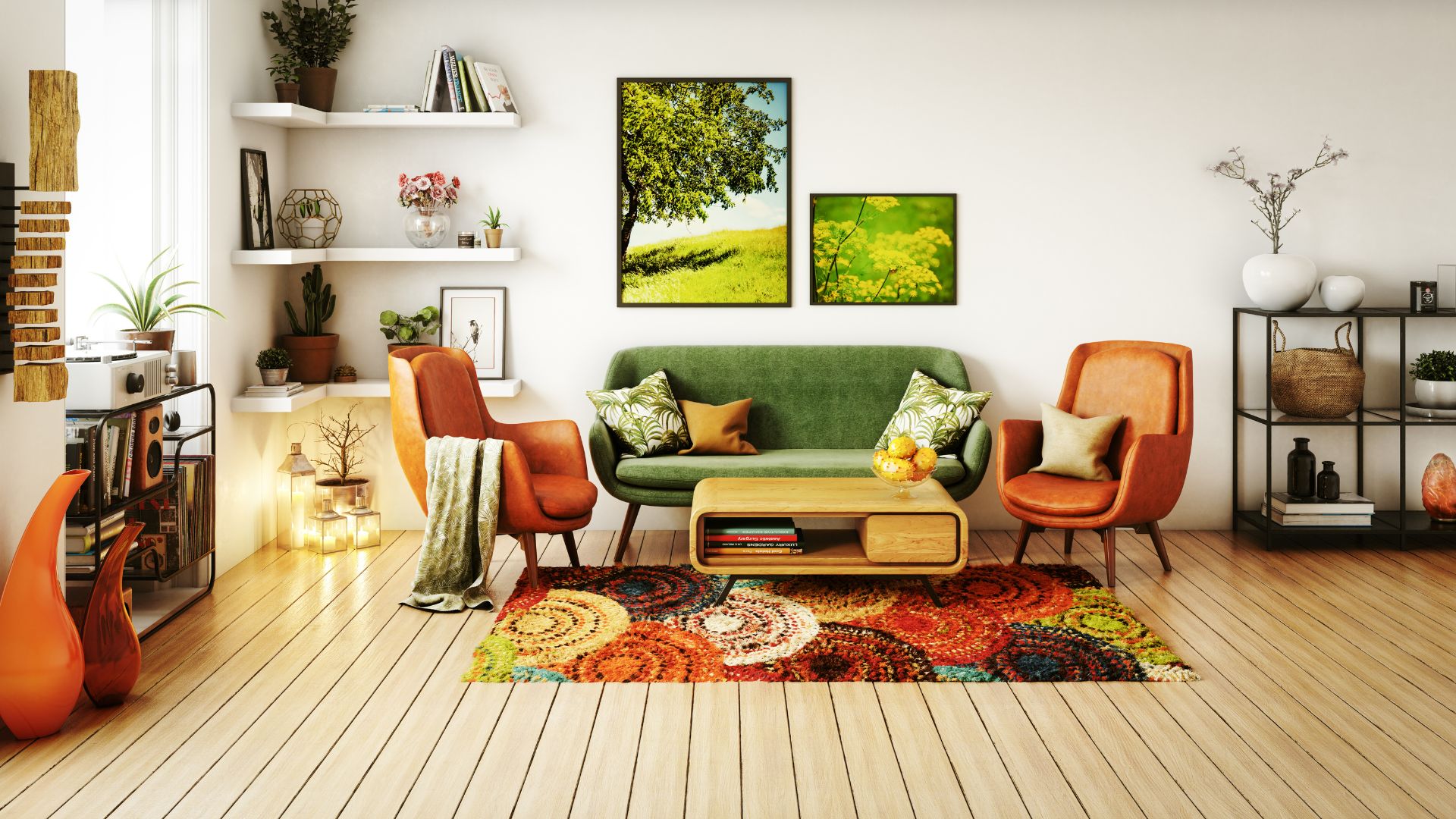Exploring the Charm of 70s Interior Design
In the decade of the 70s, interior design showcased a unique blend of boldness and creativity. Vibrant colors lit up the living rooms, while varying patterns offered visual interest with their diverse and organic shapes. Texture was another critical element, enhancing depth and detail, which made the environments appear not only attractive but also intriguing.
For example, shag pile rugs, a staple of the 70s era, introduced comfort and warmth with their soft and plush material. Wallpaper, often featuring funky designs, conferred the spaces with a vibrant and dynamic character.
Each living room boasted a characteristic individualism thanks to the eclectic mix of color, pattern, and texture.
Why the 70s Style Resonates Today
The appeal of 70s style living rooms lingers even today due to its bold, no-rule design philosophy. This style catered to individual tastes over the customary, setting a design precedent that emphasizes personal expression.
People find a sense of familiarity and comfort in the eclectic mix of vintage elements evoking the nostalgia of a bygone era that is still relevant and appreciated today. The iconic 70s design elements, such as the plush shag rugs, have found a place in contemporary interior design, bringing their charm and warmth into modern homes.
Living Room 70s Interior Design
Transforming a modern living room into a 70s groove calls for iconic elements. Few items capture the essence of the era better than shag rugs, sunken sofas, modular furniture, and statement chairs. The paragraphs below delve into these integral elements of 70s-inspired living rooms.
The Rediscovery of Shag Rugs and Sunken Sofas
Shag rugs, synonymous with the era, elevate any living room’s cosiness quotient. Offering a soft, plush texture underfoot, they made their mark in colors reminiscent of the 70s – burnt orange, avocado green, and neutral tones. Shag rugs served not just as a decorative element but added warmth, especially in hardwood or tile flooring.
Sunken sofas, another prominent feature, brought people closer – both physically and metaphorically. These low-to-the-ground, plush seating options created an intimate, social atmosphere and represented a break from traditional furniture designs. Often found in bright colors or daring patterns, they made a living room look hip and relaxed.
The Role of Modular Furniture and Statement Chairs
70s living rooms saw an influx of modular furniture. Transforming to match the room’s function – be it lounging, entertaining, or working – these flexible pieces redefined versatility. For instance, stackable shelving units showcased collectibles and books, while modular couches and coffee tables adapted to varying spatial needs.
Statement chairs, on the other hand, added personality to living spaces. Thonet’s bentwood chairs, Eames’ lounge chair, or Bertoia’s wire chairs were the heart of many 70s living rooms. These eccentric pieces, often in bright colors or innovative materials such as plastic or chrome, were more than mere seats – they embodied the era’s signature blend of functionality and free-spirited style.
Balancing Vintage and Contemporary Elements
The task is bringing harmony to the contrast between retro 70s elements and contemporary design principles. Using the color palette of the period, like burnt orange and avocado green, in modern designs, bridges the gap between past and future.
This balance can also be achieved by juxtaposing characteristic 70s furniture pieces with sleek, minimalist accents, combining the accustomed comfort of modern living with the unique retro vibes of the era. A sunken sofa done in a contemporary material maintains the warm, intimate touch of yesteryears alongside the present-day feels.
Exploiting modular furniture adaptability aligns the functionality of 70s design with the versatility required today. Adding versatile pieces that embody the era’s free-spirited style, such as Thonet’s bentwood chairs, infuses a shot of retro charm.
Together, incorporating technology into retro decor and harmoniously balancing vintage and contemporary elements promote an updated 70s living room style that exemplifies both modern comfort and nostalgic elegance.
